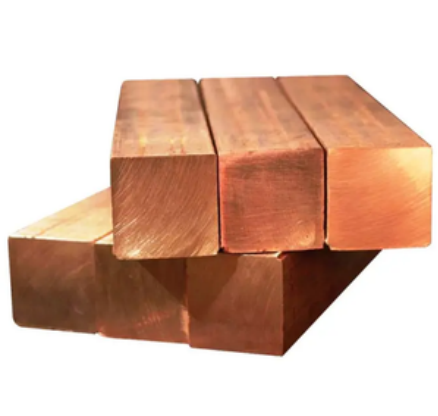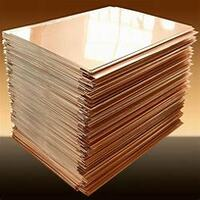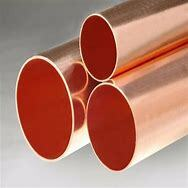1. Introduction
Just 24 hours ago, a major tech campus in Texas reported a near-miss lightning strike that was safely diverted thanks to its advanced copper-based earthing infrastructure—a timely reminder of how foundational materials like copper rod quietly protect our digital world. While most people associate copper with wiring or plumbing, its role in specialized applications like grounding and precision welding is both sophisticated and indispensable.

In this article, we’ll dive into two high-stakes, niche uses of copper rod: as a core component in modern earthing systems and as a critical consumable in copper-to-copper joining techniques. These aren’t your average DIY projects—they’re engineered solutions where material purity, conductivity, and corrosion resistance make all the difference.
2. Copper Rod in Advanced Earthing Systems
When it comes to protecting sensitive infrastructure—from telecom towers to hospital backup generators—reliable grounding isn’t optional. That’s where the copper earth rod and its variants shine. Unlike standard steel rods, copper bonded earthing rods combine the tensile strength of steel with the superior conductivity and corrosion resistance of copper.
The copper bonded steel core is electroplated or continuously cast with a thick layer of pure copper, creating a copper bonded ground rod that lasts decades even in aggressive soils. Similarly, copper clad steel ground rods and copper clad earth rods offer cost-effective alternatives without sacrificing performance. For high-corrosion environments, solid rod copper or round bar copper is preferred, though at a higher copper rod price.

- Copper earth strip 25x3mm is often paired with these rods for low-resistance grounding grids.
- Flat copper strip and copper strip for earthing provide flexible interconnection between rods and equipment.
- When sourcing, professionals often search for ‘copper strip near me’ or compare ‘earthing rod price’ across suppliers to balance budget and reliability.
3. Precision Joining: Copper Rod for Welding and Brazing
Beyond grounding, copper rod plays a starring role in metal joining—especially in HVAC, refrigeration, and high-purity fluid systems. Here, the focus shifts to copper brazing rod and copper welding rod formulations designed specifically for copper-to-copper joints.
Unlike steel welding, joining copper requires materials that match its thermal expansion and conductivity. Copper to copper brazing rods—often phosphorus-deoxidized—create strong, leak-proof bonds without flux in many applications. For repairs or custom fabrications, a copper to copper welding rod ensures metallurgical compatibility, minimizing stress cracks and galvanic corrosion.

Technicians working on air conditioning copper pipe systems rely on these rods daily. Whether it’s resoldering copper pipe joints or installing new aircon copper tube runs, using the right copper rod for welding prevents costly leaks and system failures. The process demands clean surfaces, proper heat control, and—critically—the correct filler material like welding rod copper rated for refrigeration-grade purity.
4. Material Variants and Market Considerations
Not all copper rods are created equal. The market offers everything from oxygen-free high-conductivity (OFHC) copper round bar for electrical busbars to beryllium copper strip for spring contacts in aerospace. Nickel plated copper strip enhances solderability in electronics, while 1mm copper strip or thin copper strips serve in flexible circuits and EMI shielding.
For recyclers and scrap handlers, questions like ‘best way to strip copper wire’ or ‘fast way to strip copper cable’ dominate—but professionals in advanced fields care more about alloy composition and certification. Burning copper wire for scrap is discouraged due to toxic fumes and material degradation; instead, mechanical stripping preserves value.
Meanwhile, copper pipe sizing—from 15mm copper tube to 22mm copper pipe—must align with system pressure and flow requirements. Copper pipe soldering remains a core skill, but modern installations increasingly use copper pipe and fittings compatible with press-fit or SharkBite-style connectors for speed and reliability.
5. Conclusion
From safeguarding billion-dollar data centers with copper bonded earth rods to enabling flawless copper rod welding in next-gen HVAC systems, the copper rod proves that even ‘basic’ materials can drive cutting-edge performance. As infrastructure demands grow more complex, the right choice of rod copper—whether solid, clad, or alloyed—will remain a silent hero in engineering excellence.
Our Website founded on October 17, 2012, is a high-tech enterprise committed to the research and development, production, processing, sales and technical services of ceramic relative materials such as Copper. Our products includes but not limited to Boron Carbide Ceramic Products, Boron Nitride Ceramic Products, Silicon Carbide Ceramic Products, Silicon Nitride Ceramic Products, Zirconium Dioxide Ceramic Products, etc. If you are interested, please feel free to contact us.

